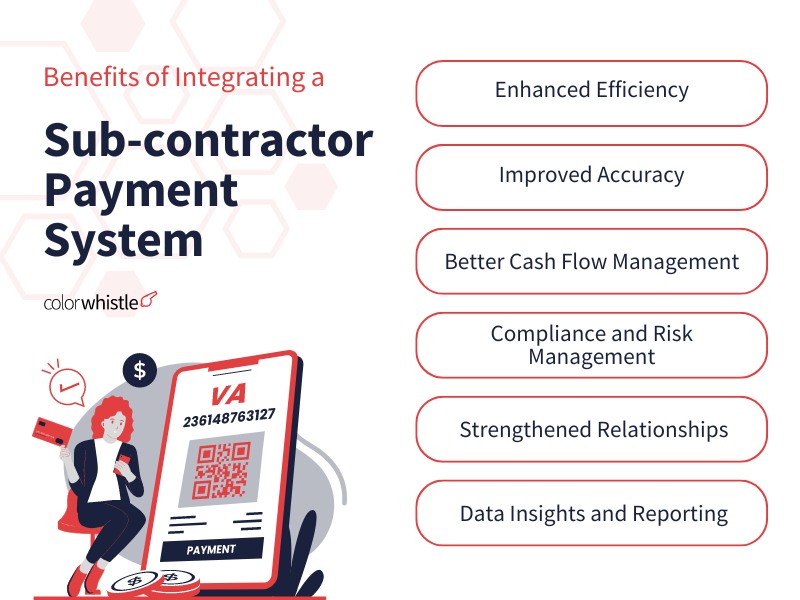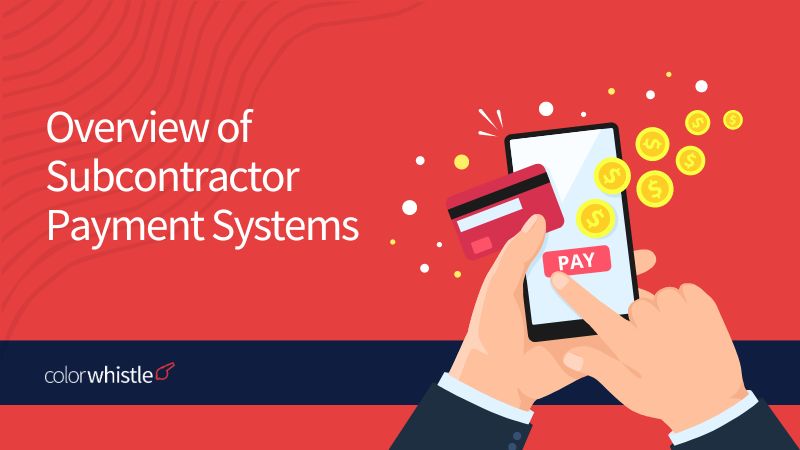Consider a large construction project for a new commercial building. The general contractor hires multiple subcontractors for specialized tasks such as electrical work, plumbing, and interior finishing. Traditionally, managing payments to these subcontractors would involve a lot of manual paperwork, back-and-forth communications, and the potential for errors.
This is the common scenario of every construction business. This is where the subcontractor payment system comes into the picture for enhancing efficiency, accuracy, and relationships with subcontractors while providing valuable insights into project finances. Being a website development company we are showcasing here an overview of subcontractor payment systems and the solutions we can provide to overcome the challenges in the subcontractor payments.
What are Subcontractor Payment Systems?
A Subcontractor Payment System (SPS) is a digital platform designed to manage and streamline the payment processes for subcontractors in construction projects. These systems facilitate accurate tracking of work progress, validation of completed tasks, and timely payments, ensuring transparency and efficiency in financial transactions. By leveraging technology, subcontractor payment systems handle invoicing, approval workflows, payment scheduling, and compliance management, reducing administrative burden and minimizing the risk of errors or disputes.
Benefits of Integrating a Subcontractor Payment System to Your Construction Business
Integrating a subcontractor payment system into your construction business can provide numerous advantages,
- Automating payment processes reduces the time spent on manual data entry, approvals, and payment processing, allowing your team to focus on core business activities.
- These systems minimize the risk of human errors in invoicing and payment calculations, ensuring subcontractors are paid correctly and on time.
- With real-time tracking of payment statuses and scheduled payments, businesses can manage their cash flow more effectively, avoiding cash shortages or delays.
- Subcontractor payment systems ensure all compliance requirements are met, reducing the risk of legal issues or fines. They also provide a clear audit trail for all transactions.
- Timely and accurate payments help build trust and positive relationships with subcontractors, leading to better collaboration and project outcomes.
- Advanced analytics and reporting features offer valuable insights into payment trends, project costs, and financial health, enabling informed decision-making.

Key Features of an Efficient Subcontractor Payment System
An efficient subcontractor payment system should include the following key features:
- Enabling subcontractors to submit invoices electronically, automatically routed for approval.
- Customizable approval processes to ensure that all invoices are reviewed and approved by the appropriate personnel before payment.
- Automatically scheduling payments based on predefined terms, ensuring subcontractors are paid promptly.
- Tracking and managing compliance documents such as insurance certificates, lien waivers, and tax forms.
- Seamlessly integrating with existing accounting and project management software to provide a unified financial management system.
- Providing real-time visibility into payment statuses, pending approvals, and overall financial health.
- Generating detailed reports on payment histories, cash flow, and project expenses, helping businesses make data-driven decisions.
- Ensuring ease of use for all stakeholders, including general contractors, subcontractors, and financial managers.
Also Read
Challenges Faced in Subcontractor Payments
Managing subcontractor payments presents several challenges that impact project efficiency and relationships. Maintaining cash flow is critical, as delays in client payments can cascade down to subcontractors, causing dissatisfaction and work stoppages. Accurate and timely invoicing can be problematic, with errors or missing documentation leading to delays. Managing multiple subcontractors with varied contracts and payment terms adds complexity, requiring meticulous tracking and administration.
Disputes over work quality or scope changes further complicate payments, necessitating clear communication and resolution mechanisms. Compliance with legal and tax regulations is essential but cumbersome. Integrating payment systems with existing accounting and project management software poses technical challenges, requiring seamless data flow for accuracy and efficiency. Addressing these challenges is vital for maintaining project momentum and fostering positive subcontractor relationships.
Solutions from ColorWhistle to Simplify the Subcontractor Payments
ColorWhistle offers robust solutions to address subcontractor payment challenges through its advanced payment system. It ensures timely payments by automating schedules and integrating with client invoicing, aligning cash inflows and outflows effectively. The platform automates invoicing, reducing errors and ensuring all required documentation is attached, streamlining the approval process. Managing multiple subcontractors is simplified with a centralized dashboard that tracks payment statuses, contract details, and terms, enabling efficient administration.
Clear communication channels and transparent records of work and payments help resolve disputes quickly, maintaining project momentum. The system handles various legal and tax regulations, ensuring compliance through automated updates and checks. Additionally, ColorWhistle’s payment system integrates seamlessly with existing accounting and project management software, ensuring data accuracy and operational efficiency. These solutions collectively enhance payment processing, boost subcontractor satisfaction, and streamline project management.
To learn more about our subcontractor payment system read the case study.
Future Trends in Subcontractor Payment Systems
The future of subcontractor payment systems can be shaped by several emerging trends:
- AI and ML will enhance predictive analytics, allowing businesses to forecast cash flow needs and optimize payment schedules.
- Blockchain can provide a secure and transparent ledger for transactions, reducing fraud and ensuring data integrity.
- Mobile-friendly payment systems will enable contractors and subcontractors to manage payments and approvals on the go, increasing flexibility and efficiency.
- The Internet of Things (IoT) can offer real-time data from construction sites, improving the accuracy of project tracking and financial management.
- As cyber threats evolve, subcontractor payment systems will incorporate advanced security features to protect sensitive financial information.
- Eco-friendly practices will influence the development of systems that reduce paper use and promote digital transactions.
By staying ahead of these trends, construction businesses can continue to improve their financial management processes, ensuring smooth operations and stronger relationships with their subcontractors.
Also Read
Be the Change
Subcontractor payment systems are vital for streamlining financial operations in the construction industry. These systems enhance efficiency, accuracy, and compliance, making it easier to manage payments and maintain strong relationships with subcontractors. By automating key processes and providing real-time insights, subcontractor payment systems reduce administrative burdens and mitigate risks. Adopting such systems not only improves current operations but also prepares businesses for future advancements in technology and financial management. Utilizing these tools is a strategic move towards ensuring smooth, transparent, and efficient project execution.
Stroll through our ColorWhistle pages to discover our tailored services. Ping us or call us at +1 (919) 234-5140, and we’ll be on it like paint on a canvas! Our services are as unique as your business – let’s make magic happen together!
In Quest of the Perfect Subcontractor Management Partner?
Be unrestricted to click the other trendy writes under this title that best suits your needs!
- PoC for Smart Scheduling Platforms to Manage Subcontractor Teams
- Top Features to Look for in a Subcontractor Management Web Application
- Why Does Every Construction Company Need a Custom Subcontractor Management Web Solution?
- Future Trends and Innovations in Subcontractor Payment Processes
- Importance of Efficient Subcontractor Payment Systems in Construction Projects
- Best Practices for Managing Subcontractor Payment Systems in Construction Projects
- Top PropTech Trends Every Construction Website Should Feature
- 20+ Construction CRM Software to Simplify Project Management
What’s Next?
Now that you’ve had the chance to explore our blog, it’s time to take the next step and see what opportunities await!





